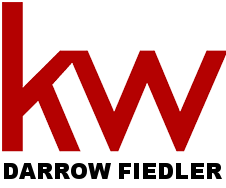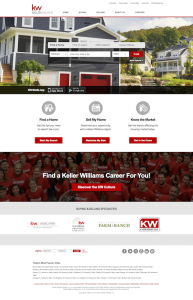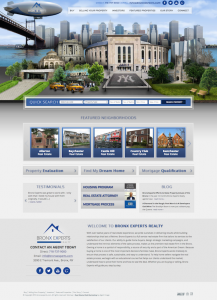Here are two beautiful examples of optimized home pages for real estate companies. They are simple, functional, and captivating to look at. There is plenty of rich information above the fold, which I will explain in a moment, and they help people to have user-friendly experiences, while on their websites. It is important to optimize your page as a real estate agent in order to get the most leads and develop the most traction from your audience. Here’s seven steps on how to do so with ease.
1) Ace the Homepage Look
Display pictures of real estate or neighborhood attractions as your head image for the site. Keep them rotating every three seconds to keep the attention of your viewer. Have your contact information at the top of the page with your social media sites there, as well. Make sure to keep these images up to date and fresh so that guests do not tire of your websites look. Keep them intrigued with newer and better properties and things to do in the area. If someone does not get what your company is about and who you are by looking at the content above the fold (all the information at the top of the page before having to scroll down), then you need to make changes to your site.
2) Have an IDX
An IDX (Internet Data Exchange) is needed above the fold. Matthew Bushery from Placester states, “[IDX] integration, which allows you to add listings in your area via your local Multiple Listing Service (MLS), is paramount for your real estate website.” Making this the focal point of your website is key to success, because most people coming to your website will be looking for a property dependent on the criteria that they bring to the table. This is what an IDX allows for them to search.
3) Feature Homes or Neighborhoods
Show off your most popular homes and/or neighborhoods on the home page. Keep your audience enticed by the good looks, great statistics, and great prices.
4) Give Your Audience Access to Your Blog
Blogging is the main focal point of your online brand. You must blog to show people you are a resource for the knowledge they seek and that you are active and have something to say. Syndicating this content across your social media profiles is important to getting your audiences to share and interact with your content. Show a featured image from the blog with a small blurb about it on the home page. Let your captive audience explore your blogs from there.
5) Allow Your Audience to Contact You
Make sure to keep a contact form on each page of your website so that interested buyers and sellers can reach you with ease. This will generate leads for you.
6) Share Testimonials
You will want to do anything ethical that you can do to earn the trust of your potential clients. Steadily grow your client’s or potential client’s trust as they surf your website by sharing testimonials on each page.
7) Designate a Page for Staff Members
Keep your entire staff on a page of your website with a photograph, biography, and contact information for each person. This will make your audience feel more comfortable with reaching out to and speaking with you, as this makes them feel welcomed to do so.
Keeping your website optimized is essential to your website’s success in developing leads for you, reeling in potential clients, and making your company the top source of real estate information for your audience. Follow these steps, and you will be well on your way to engaging a captivated audience.



